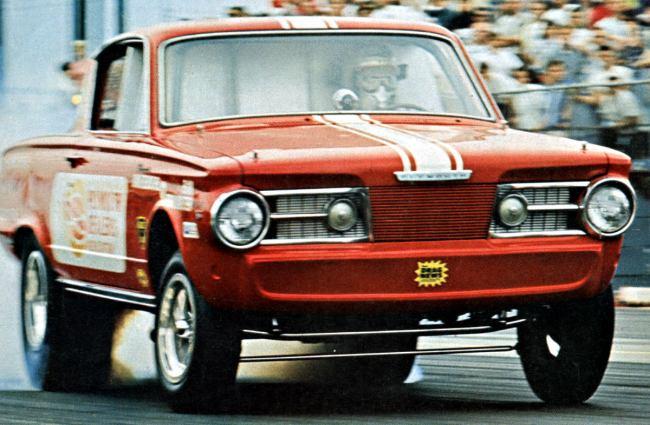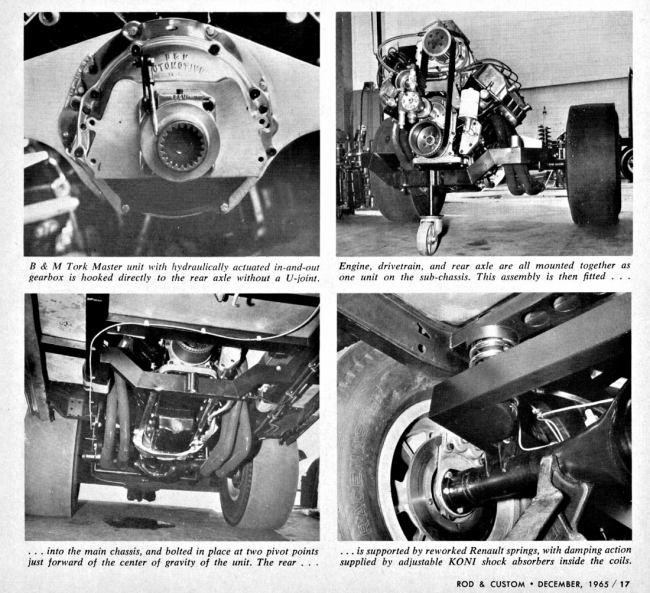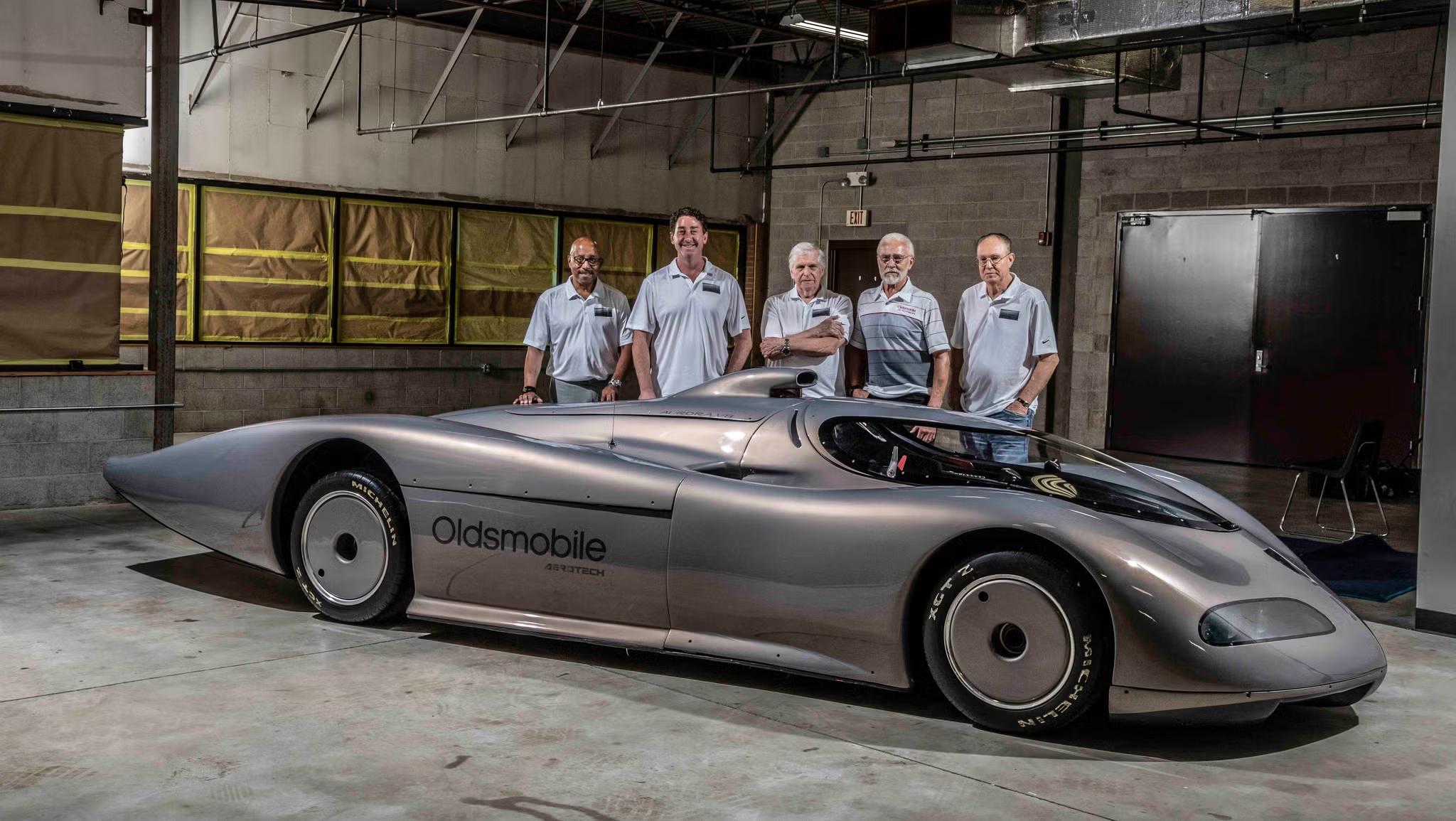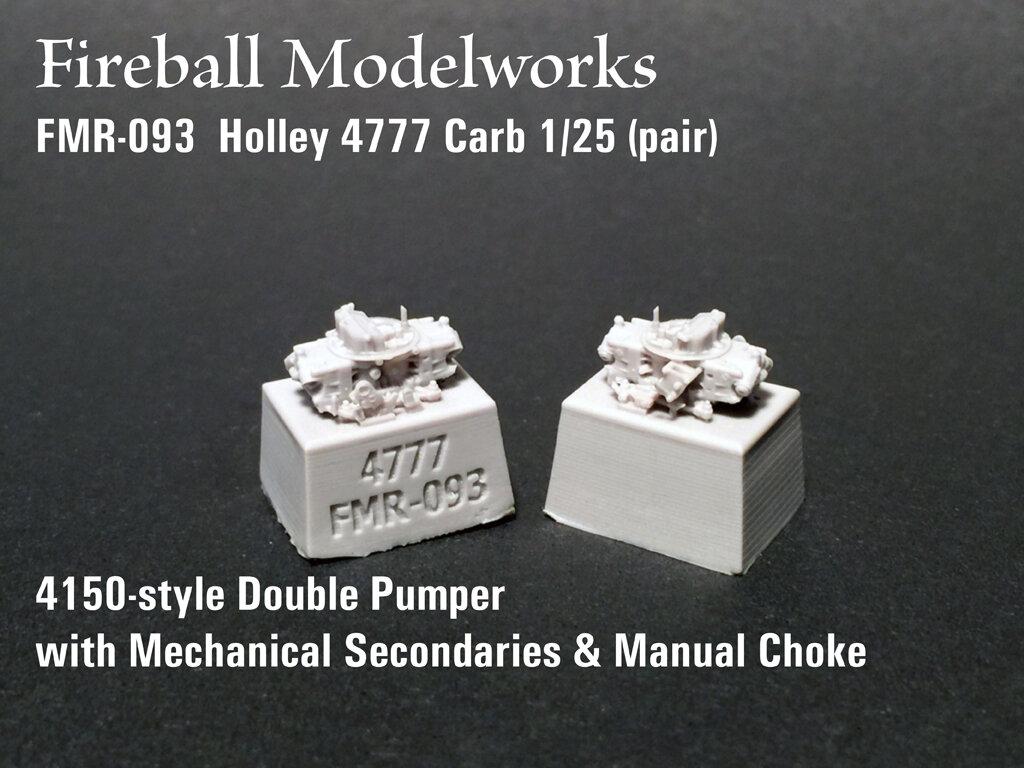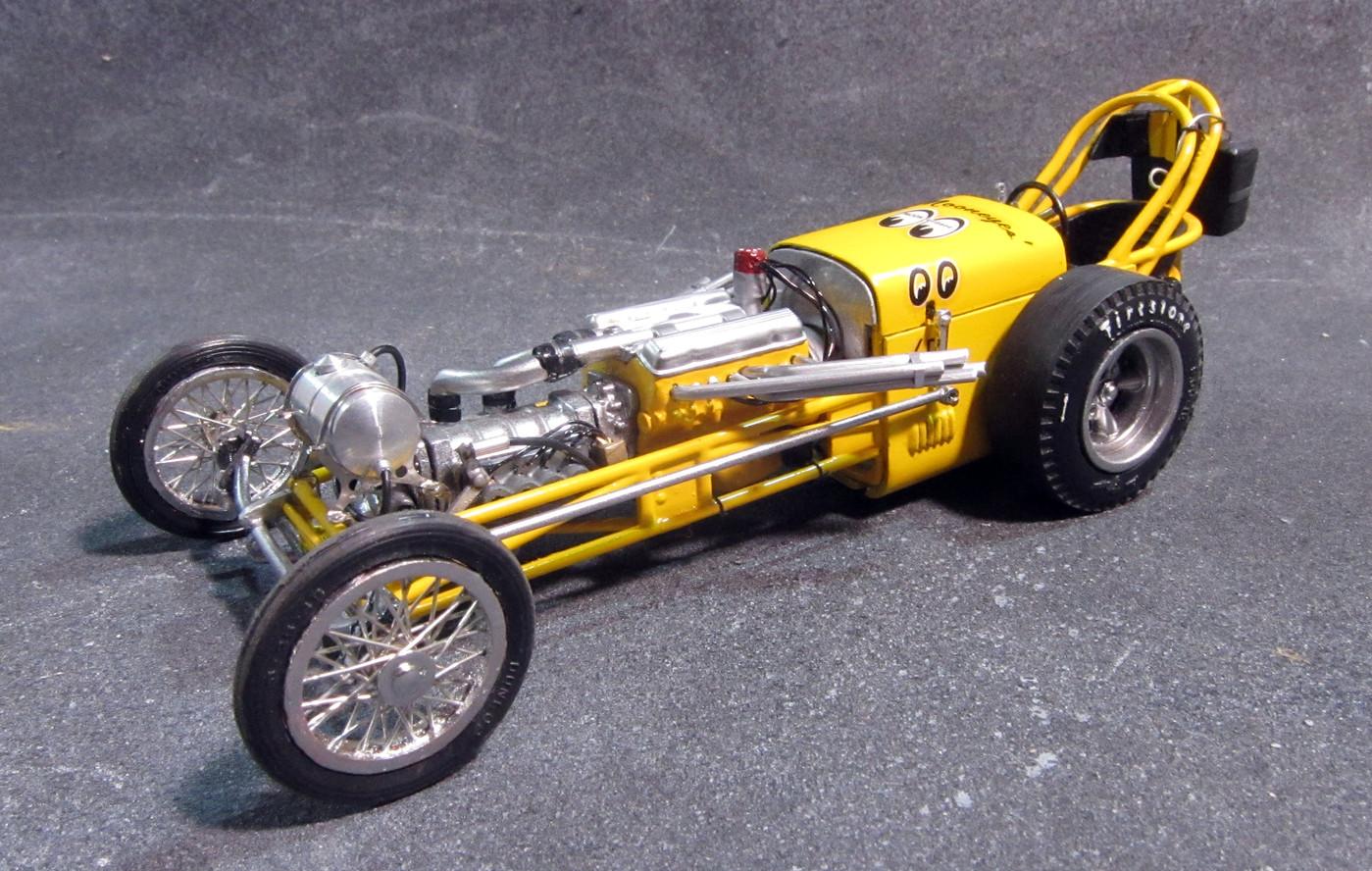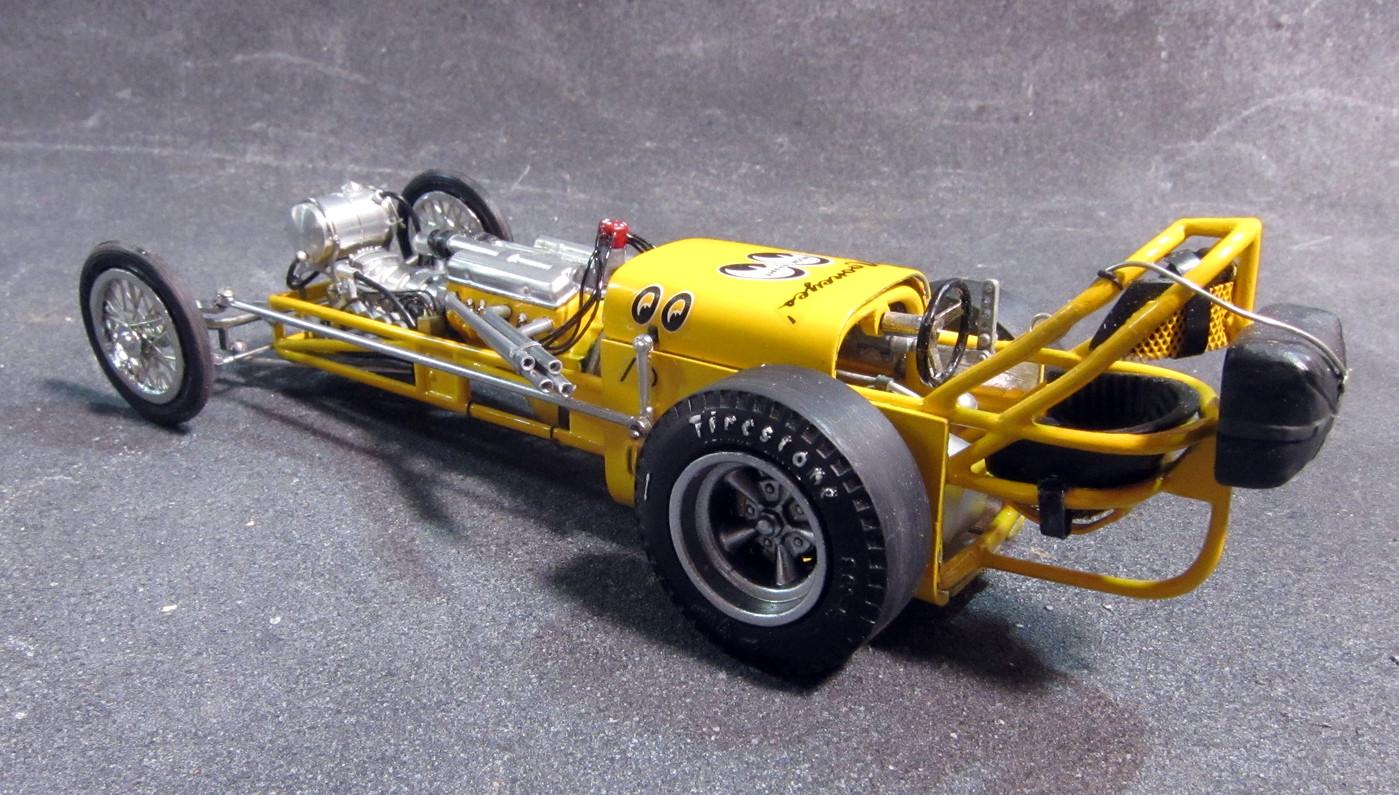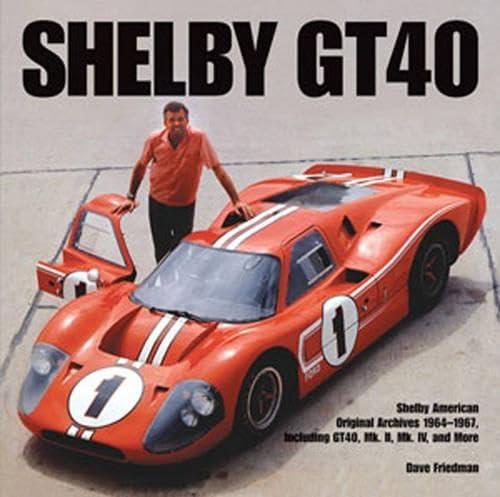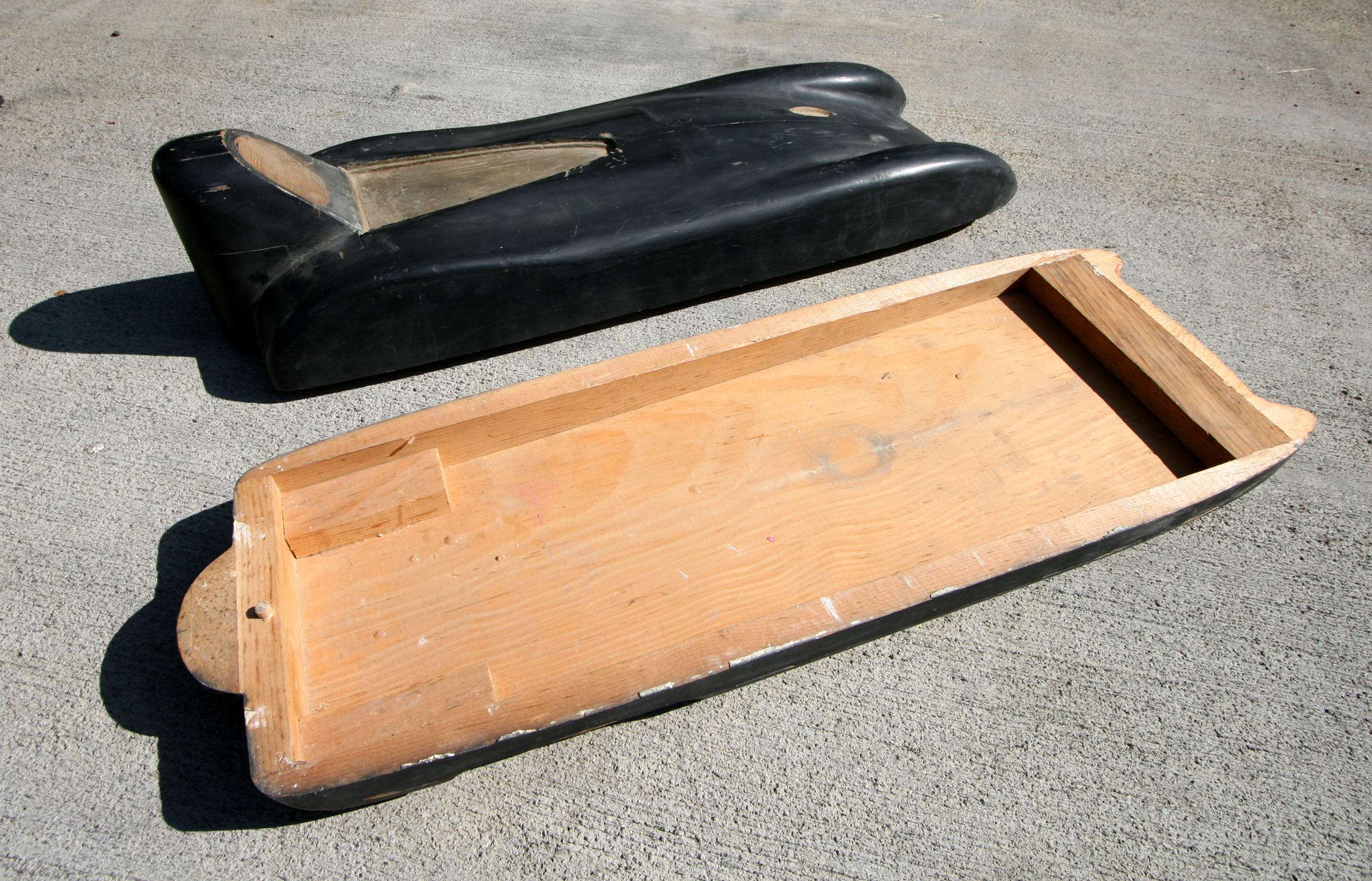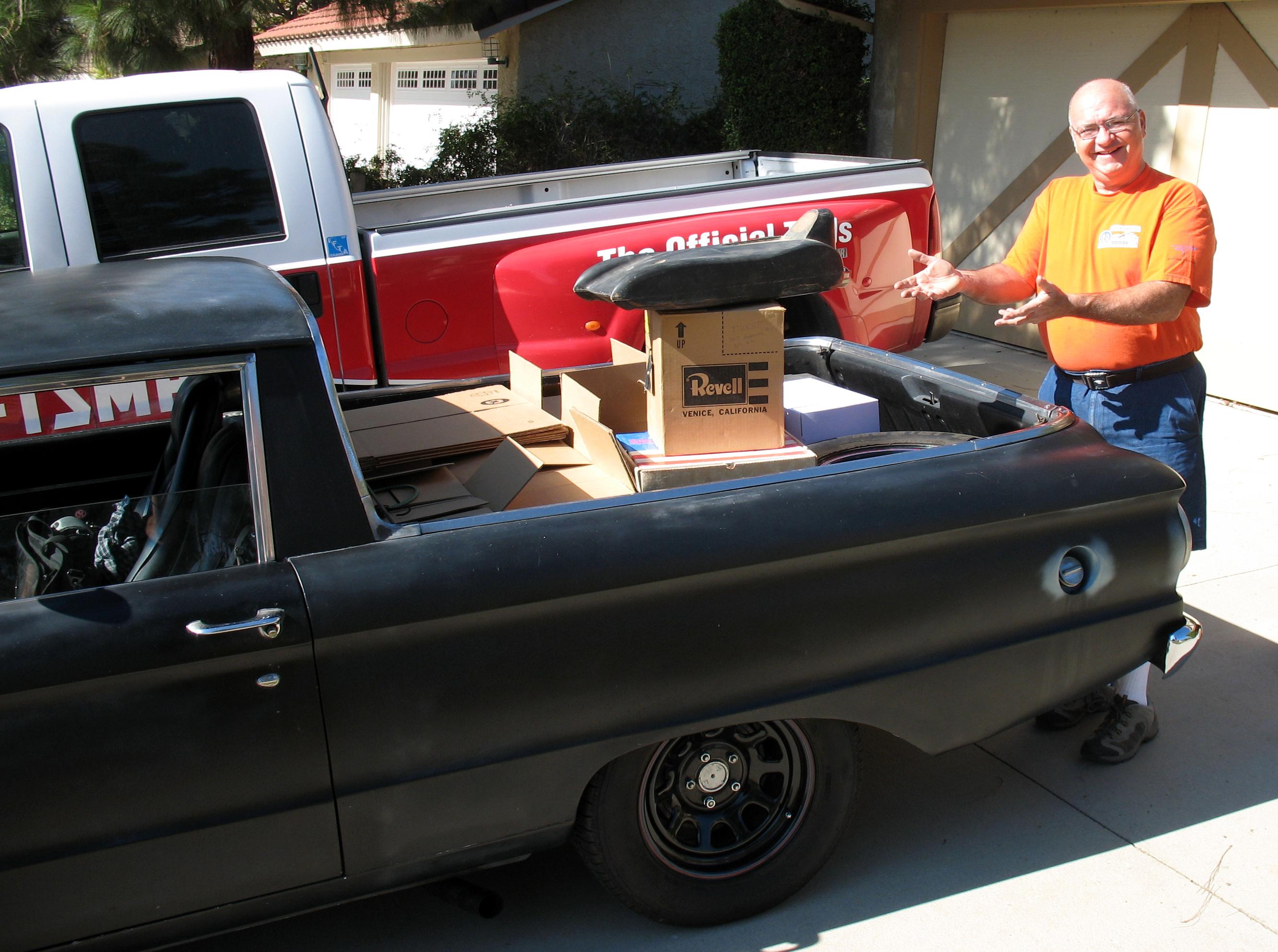-
Posts
1,707 -
Joined
-
Last visited
Content Type
Profiles
Forums
Events
Gallery
Everything posted by RancheroSteve
-
Oh, realized what you meant by this 1G/2G thing was "early" (392, etc) Hemi vs. later (426) Hemi. Just looked at my HUG kit and it does indeed have the rear mounted distributor like the early Hemi, but overall is fairly blobby, so I can't tell you which Hemi it better represents apart from the distributor/magneto location. In any case, many good scale representations of both generations of Hemis abound. The McEwen car shown in the R&C article looks to have a later Hemi, FWIW. Apart from sourcing a slightly different front axle, it looks like everything else is very close to the McEwen car, at least in the general sense.
-
PM sent
-
Not being that much of Hemi expert, I wasn't even aware of this 1G/2G thing, oh well. I suspect if & when I get to it I'll just try get the big, obvious stuff right and build a nice shelf model. On that note, the December 1965 issue of Rod & Custom has several pages on the car, with lots of photos that should be useful for the serious builder.
-

November 2025 Round 2 Product Spotlight
RancheroSteve replied to Tim W. SoCal's topic in Car Kit News & Reviews
Kinda makes one wonder what happened to all those now windshield-less '62 Oldsmobiles, right? Meanwhile, I've got a Jo-Han '62 Olds with a cracked windsheild - maybe I should try the windshield from the Nova. -
Apparently some of his parts are now 3D printed, but I believe the carbs are still resin cast in order to get the detail he wants. They really are outstanding and his service is first-rate.
-
The ASA kits are listed as 1/25 and yes, they have rather nice carbs. Not sure why you're ruling out resin, but Fireball Modelworks has some excellent pieces. https://www.fireballmodels.info/fmr-093.html
-
Exactly - the dragster is great, but the trailer is especially impressive!
-

Software to create decals
RancheroSteve replied to Mike 1017's topic in Model Building Questions and Answers
I usually use Photoshop Elements (a stripped down version of Photoshop) when I need to create decals. Not quite free, but you can pick up older versions on disc very cheaply. There's also a program called Krita which is free and works very much like Photoshop - lots of tools for manipulating images. I have it, but I've only used it sparingly. -

ARII Chaparral 2C
RancheroSteve replied to Mark W's topic in WIP: Other Racing: Road Racing, Land Speed Racers
For what it's worth, MCW sells Ermine White as being the correct color for the Chaparral. I think you nailed it. -
All good points, Bill. I guess we're really getting into the weeds (so to speak) here, especially for a post about model cars, but I should mention the set-up I have on my Ranchero. I'm using the Global West Negative Roll upper a-arms, the installation of which involves re-drilling the mounting points (even lower than the Shelby drop) and changes the camber curve quite a bit. It also requires a shorter spring - it doesn't require a stiffer spring, but it works better with one. The original Falcon springs are notoriously soft. The improvement in handling was immense, but I will admit that it's nicer on a smooth road. While I'm at it, I should mention that a common misconception about the Shelby Drop is that it changes the ride height - it doesn't, the real purpose is to change the roll center.
-

FORUM CHANGES THREAD
RancheroSteve replied to iamsuperdan's topic in General Automotive Talk (Trucks and Cars)
Yes, thanks - I see that. I think it's a real improvement over before, but I'm still of the opinion that the salt flats/LSR cars should be in with the drag section. To be fair though, it doesn't make a huge difference to me most of the time, as I look at all those categories frequently. Didn't mean to come off unappreciative in any way - I'm very grateful for this forum and all that you guys do to maintain it. -

FORUM CHANGES THREAD
RancheroSteve replied to iamsuperdan's topic in General Automotive Talk (Trucks and Cars)
I'd like to see the competition car categories broken down like this: 1. Oval track cars: NASCAR, short track, dirt, Indy 2. Road racing cars: F1, sports cars 3. Straightline cars: drag and salt flat/dry lake/LSR I realize there's always going to be some overlap or gray areas, but this is what makes the most sense to me in putting common types of vehicles together. -
In the real world, you'd cut the coil springs (or use shorter/stiffer) springs to lower the front on a Mustang, Comet, Falcon, etc. but this would be kind of a nutty undertaking in scale, so go with the dropped spindle approach and it will look fine. The most common method of lowering the rear is using lowering blocks, so this is exactly what cutting the rear end away from the leaf springs and shimming is doing. Good luck!
-

Revell IMSA GTO Mustang wheels & tires
RancheroSteve replied to chryslerjunkandstuff's topic in Wanted!
Some are IMSA, some are TransAm, but still essentially the same basic tube frame/silhouette race car - in fact many cars went back and forth between the series with minor changes. After seeing the above shots showing the engine bay and interior, I'd say that apart from the body, a Revell/Monogram IMSA Mustang would be the best starting point for building a replica of one of these cars. -
I've been scouring the Falconer & Nye book for info on those wheels and can't find much. The earlier version of the Chaparral used a wheel that they cast, based on the Lotus 19 "wobbly wheel". When Chevrolet built the Corvette GSIIb (the second photo in the original post above) using the disc type wheels, Chaparral switched to those, but found the brakes overheating due to lack of ventilation. Then the now-familiar spoked wheel was designed by Frank Boehm (an engineer at Chevrolet) but made by Arlington Industries for Chaparral. They started using those wheels at the beginning of 1965. I have no idea if those disc wheels have ever been kitted, so I can't help you there, sorry.
-
Upgrade/update: I recently began attempting to fashion my own wire wheels. After some trial & error I was able to produce an acceptable pair, so I went back and retrofitted this build. A worthwhile improvement, I think. Moderators: can you move this to the Drag Racing section? (I don't think that section existed when I first posted this).
-

Revell IMSA GTO Mustang wheels & tires
RancheroSteve replied to chryslerjunkandstuff's topic in Wanted!
Looks like John Bauer was the main driver of this car - and a guy named Bruce Jenner co-drove at some events. -
I've got this one - might be out of print, but looks like it's still available relatively affordably.
-
Yes, that was a last minute addition to his donation. I was getting ready to leave when I spotted on a shelf in his garage. In awe, especially as I had recently built the kit, I recognized it right away and asked about it. He said, "Okay, the Museum might as well have this as well." It felt like I had a piece of history in my hands - definitely a window into a different way of designing models than how it's done today! Hard to let it go, but I got to hang out with it for a few days before shipping it off to the Museum and managed to take a whole slew of photos.
-

Moebius Official Announcement 1964 Mercury Comets
RancheroSteve replied to Erik Solie's topic in Car Kit News & Reviews
It is certainly a subtle thing and I agree that it won't make a difference to most people. I have no issue with anyone building it straight out of the box. Part of my motivation in doing it was to see if I could pull it off. -

AMT 1960 Apache Kustom Kruiser
RancheroSteve replied to Stt226's topic in Model Trucks: Pickups, Vans, SUVs, Light Commercial
Yes, the recent (2018) version with the go-kart contains all the stock parts and no custom parts (I'm building one now).

